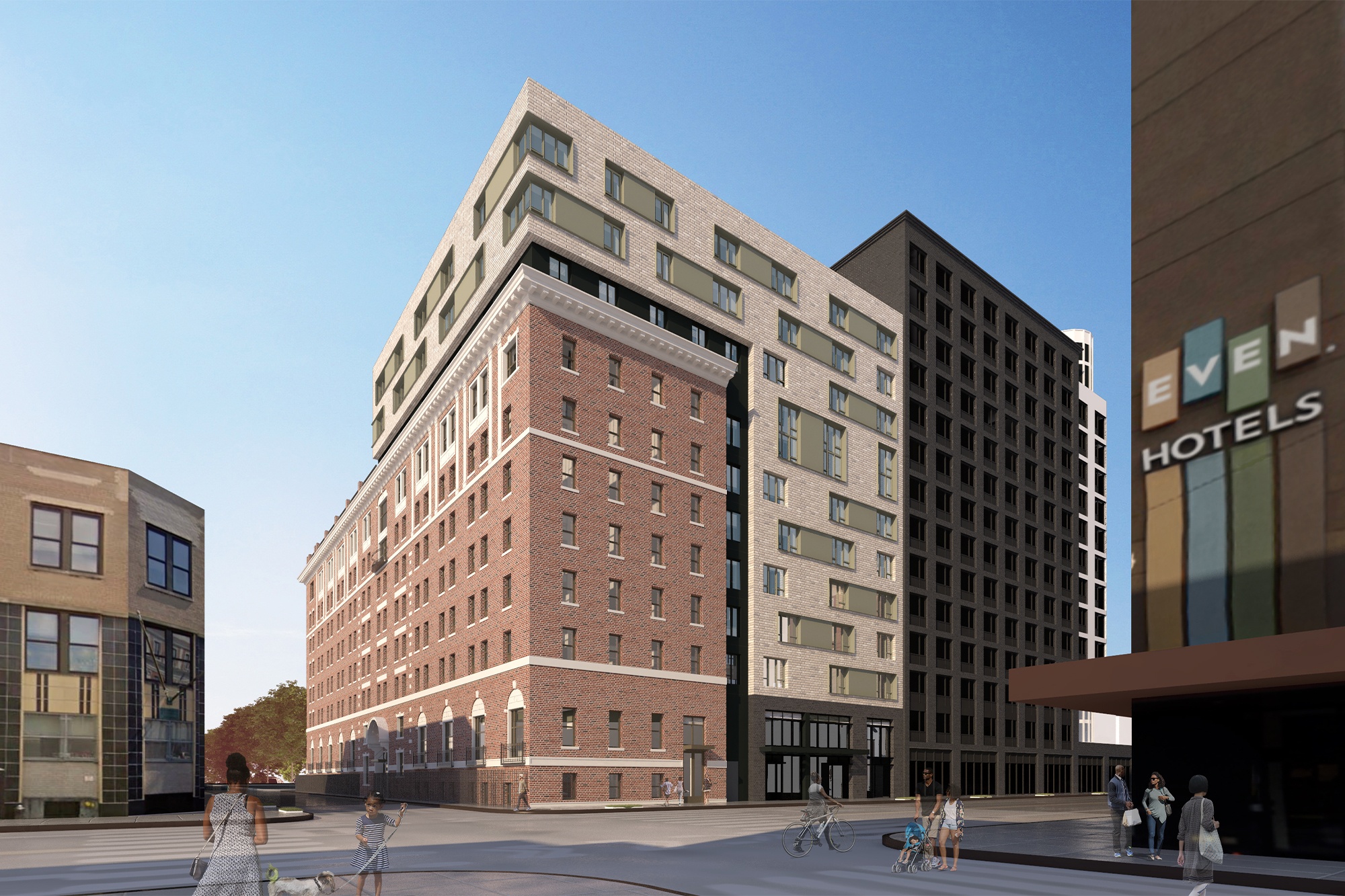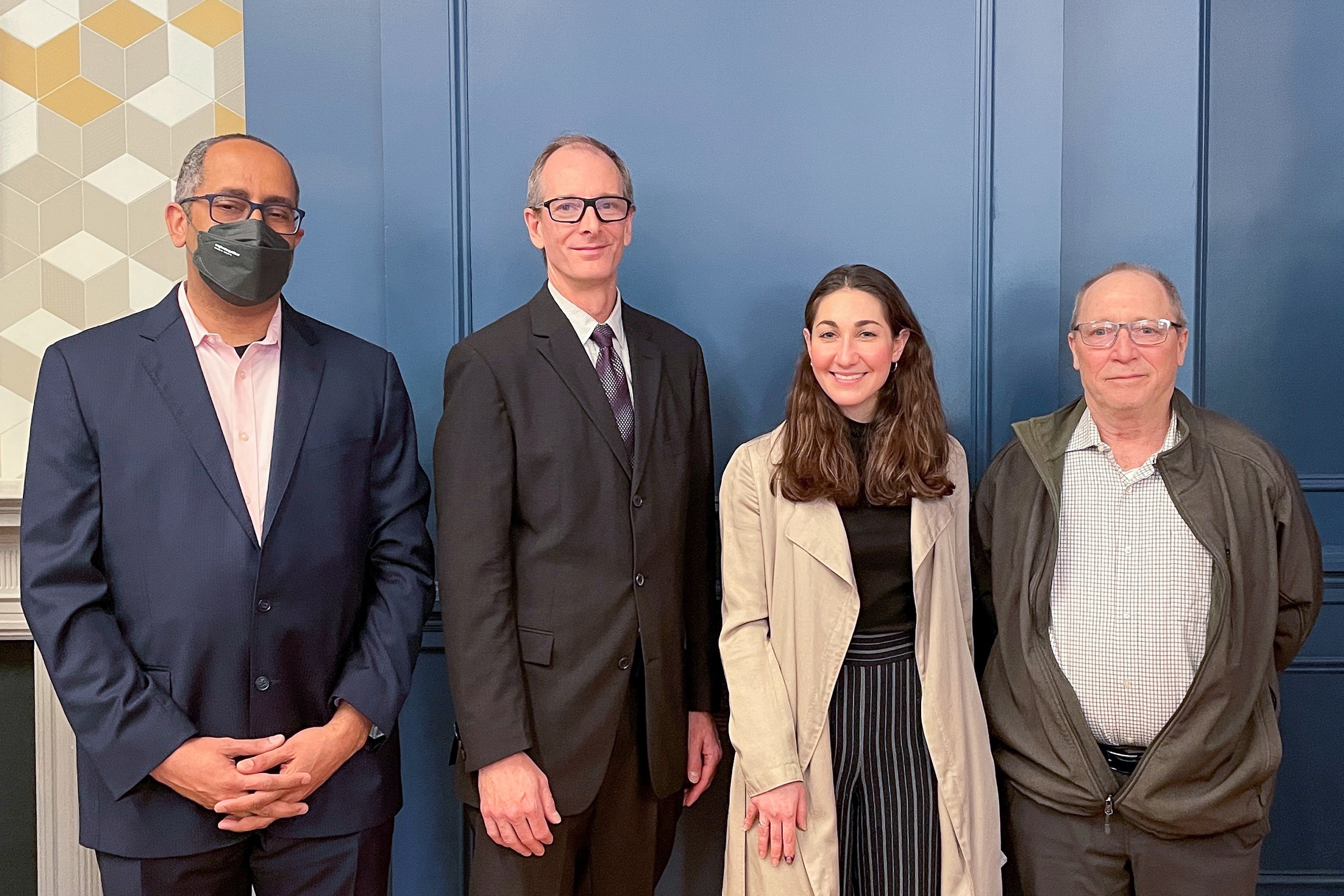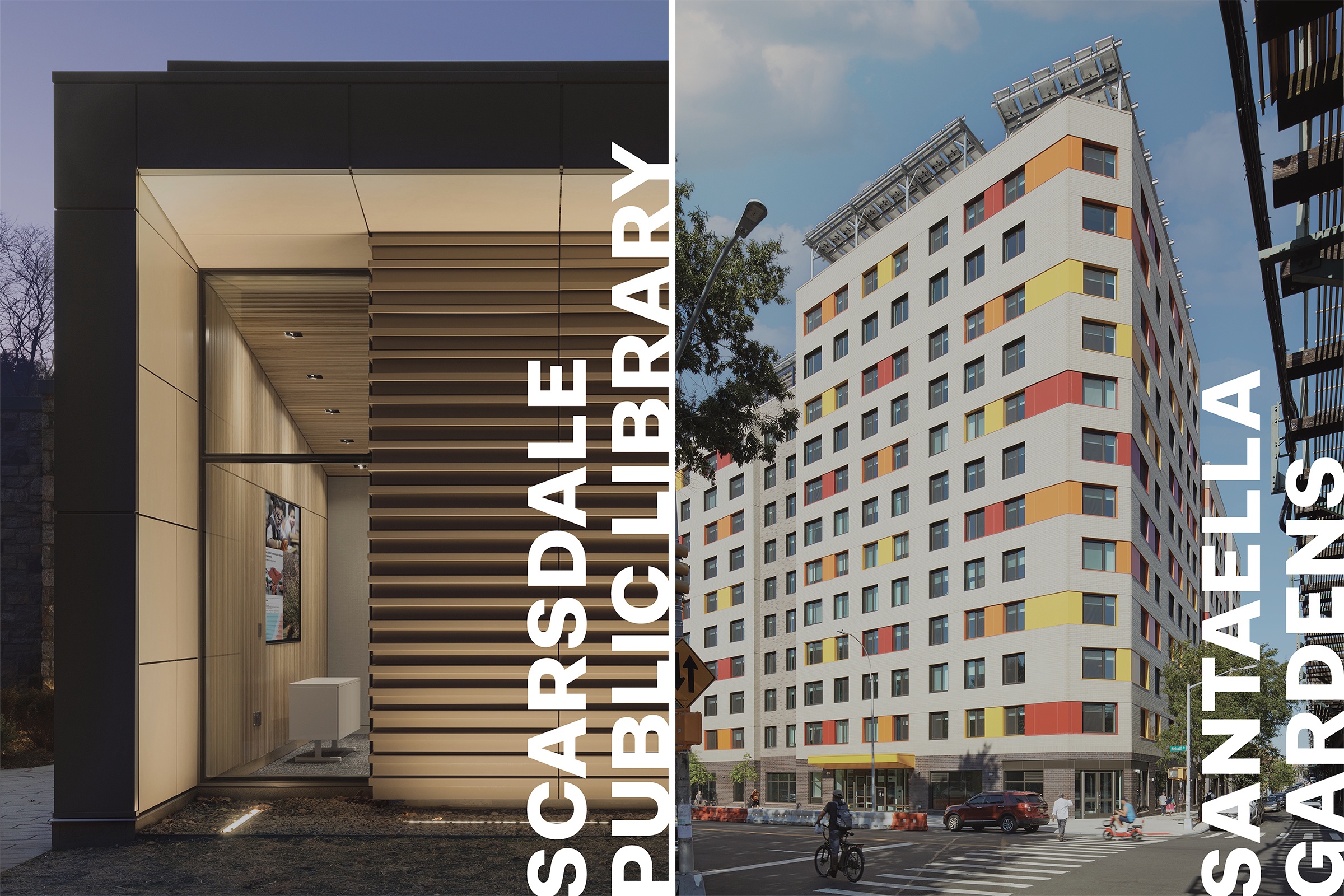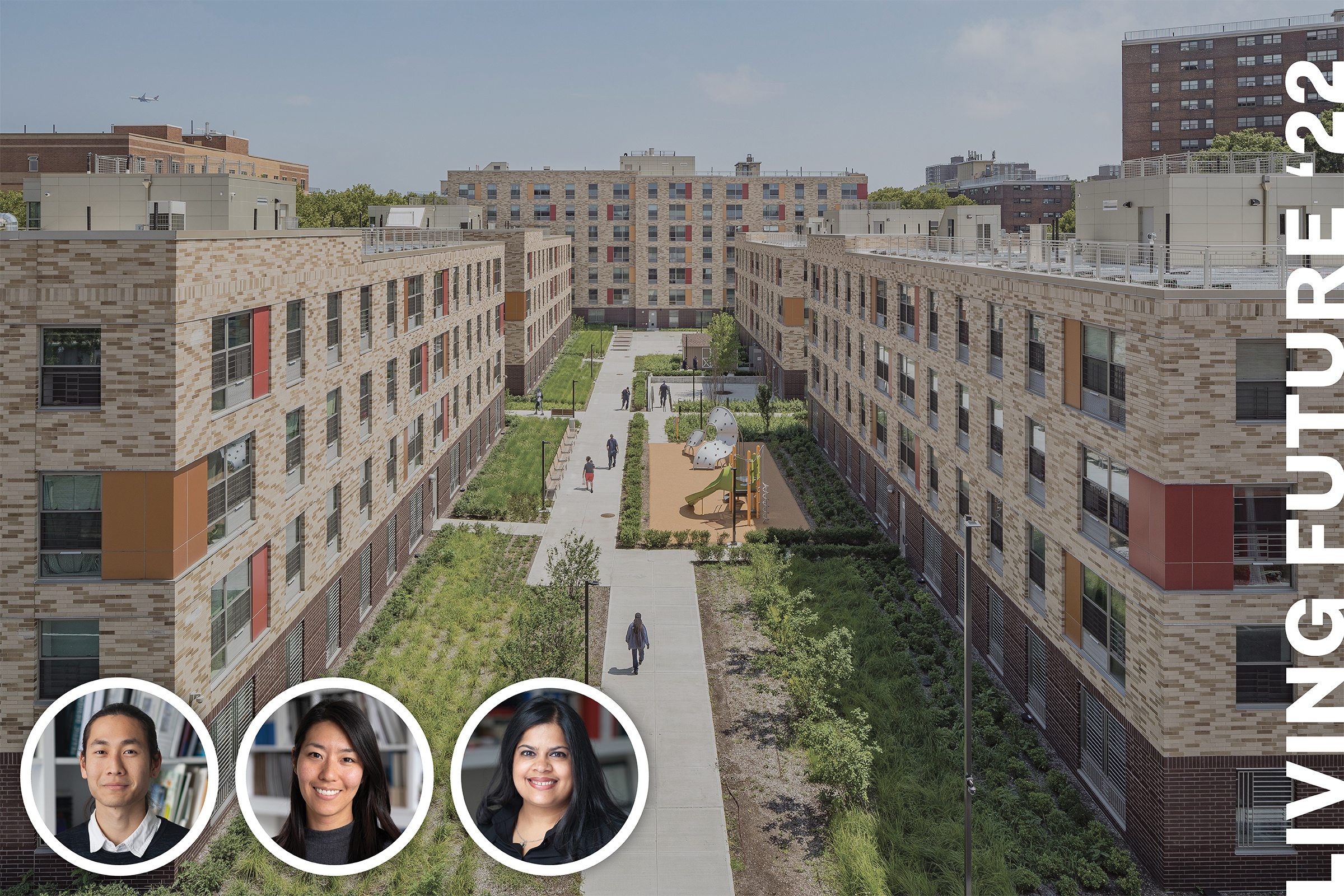On March 9, Dattner Architects joined the Institute for Community Living (ICL), Mega Contracting Group, State and City officials, and partnering community leaders for the ribbon cutting ceremony at Nevins Street Apartments.
Located in Downtown Brooklyn, Nevins Street Apartments reinvigorates a century-old building through a gut renovation and addition to provide affordable housing, supportive housing, and on-site supportive services including case management and mental health services. The historic site of 50 Nevins Street, with its new 10-story addition, now features 129 new apartments serving those in need. 78 are supportive units reserved for formerly homeless individuals, including formerly homeless veterans, individuals with histories of substance use, and people with serious mental health concerns, including young adults who have aged out of foster care.

“Dattner Architects has had the honor of collaborating with ICL and Mega Contracting Group to complete this bold repositioning of ICL’s flagship facility as a modern affordable housing building in Downtown Brooklyn. The extensive renovations of the existing building will not only make the building fully accessible, but will also improve the energy performance of the building with efficient systems coupled with on-site renewable power generation. In addition to the renovation, the project was able to expand the building footprint and density of the project through a rezoning that required support from the NYC Department of City Planning and community partners. As the saying goes, “It takes a village…” — Principal John Woelfling AIA
“50 Nevins consists of the gut-rehabilitation of a historically significant century-old building, merged with a new, contemporary-looking addition—a nod to a facility’s present connecting with its past. Originally a YWCA, this building has had indeed a long history of offering housing, shelter, and support for low-income individuals. We are pleased to have worked with ICL to contribute to such an important legacy by providing new and much needed supportive and affordable housing. We trust that the result of our collective efforts is an environment that is welcoming, stimulating, and caring—and a building which will generate an overall sense of care, comfort, and satisfaction for its residents as well as a positive impact on the neighborhood at large.” — Senior Associate Philippe Martelly AIA


